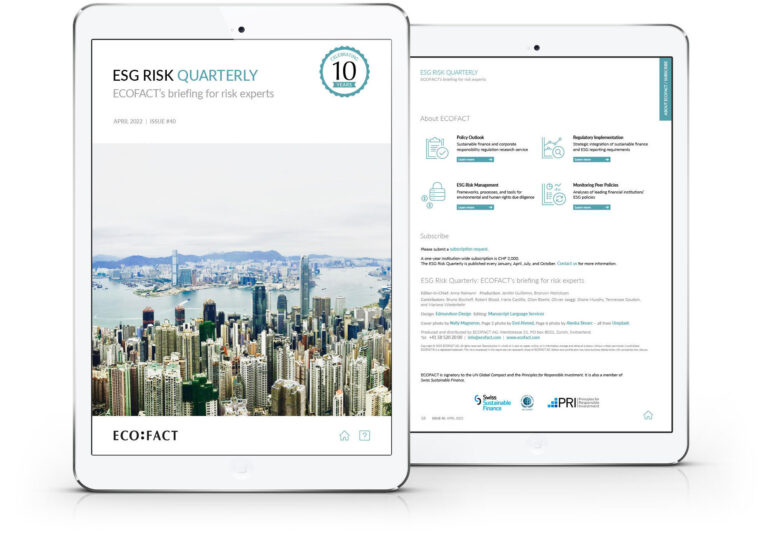Plastics: reduction is the solution, not recycling
The current focus on recycling as a solution to our plastic problem is the result of what academics call non-market strategies – using political and social leverage to build and maintain competitive advantage. Consider the Alliance to End Plastic Waste, a laudable initiative to which industry players have committed an impressive USD 1.5 billion. However, it would not exist if it did not align with business goals. Firstly, it upholds the legitimacy of plastic as a product. Secondly, the initiative focuses only on improving waste collection and recycling, avoiding critical discussion about plastic substitutes, phaseouts, and product design. Some critics even claim that the overall goal of building a global plastic-recycling industry is to “lock in” our never-ending plastic output.
When I visited the seaside as a child, I used to find seashells. Now I find plastic. I initially became aware of the plastics problem when pictures of plastic in dead birds went viral roughly a decade ago, followed by images of the Great Pacific garbage patch. Today, plastic is found everywhere, even in human blood and lung tissue. If you look at the objects that surround you, most will contain plastic; even paint and flooring materials contain plastic polymers, as do most fabrics. The OECD expects plastic production to triple by 2060, and while recycling is needed to reduce plastic in the environment, it can’t be the solution (see box 1). The only effective way of combating pollution is to reduce the pollutant at its source.
It is no wonder that policymakers are subjecting plastics to greater scrutiny. In addition to actions by national and supranational regulators, the UN Environment Assembly adopted a resolution in 2022, noting that “the rapidly increasing levels of plastic pollution represent a serious environmental problem.” The Assembly also recognizes microplastics as pollutants. UN members aim to negotiate an international, legally binding agreement on plastics by 2024.
These regulatory developments present transition risks for the plastics industry – as well as its investors. (There are, however, opportunities to be gained from developing alternative materials.) Plastic’s potential impact on human health (see box 2) poses liability risks – which are relevant for the insurance industry. These liabilities may even exceed claims related to asbestos or smoking, as plastic may affect a larger proportion of the global population in worst-case scenarios. Plastics are not a recycling problem; they are a pollution problem.
[This article originally appeared in the 45th issue of the ESG Risk Quarterly in July 2023: https://www.ecofact.com/blog/the-esg-risk-quarterly-45-ecofacts-briefing-for-risk-experts/]
Box 1: The problem with plastic recycling
Plastics can be made from thousands of different components and often include chemical additives and colorants. Packaging generally consists of inseparable layers of mixed materials, and in other products, plastic parts are usually bonded to other materials. Furthermore, plastic is not inert like glass or metal. It can absorb some of what it contains, potentially making a plastic receptacle toxic (think pesticide containers). Last, but not least, new plastic is cheaper than recycled plastic.
These factors make it practically impossible to turn plastic waste into a reusable product, with a few exceptions such as PET. As a result, recycling at scale remains uneconomical for products that could be recycled and impossible for all others. New technologies, such as chemical recycling – converting plastic waste into fuel – still need to prove their advantages.
Box 2: Micro- and nanoplastics are a concern
There are two rapidly growing sources of microplastics: primary microplastics are manufactured and added to products (e.g. artificial turf infill, fertilizers, plant protection products, cosmetics, household and industrial cleaners, paints, and varnishes).
Secondary microplastics result from the use and disposal of plastic products (e.g. car tires, fibers shed from washing synthetic textiles, shredding processes) or result from larger plastic parts breaking down into smaller and smaller pieces (plastics marketed as “biodegradable” also seem only partly to decompose). Scientists are finding micro- and nanoplastics everywhere – even in blood and lung tissue. These substances have the potential to release harmful chemicals into our bodies. Microplastics are distributed by wind and water, and have been found in soil and even fresh Antarctic snow. Microplastics barely decompose and therefore accumulate in the environment.
 All posts
All posts Contact
Contact



